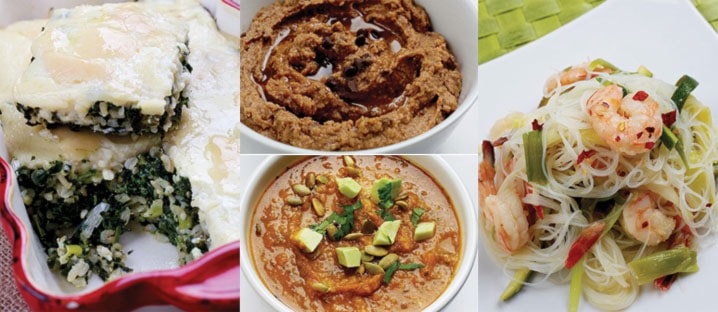What distinguishes millennial cooks in America, from, say, the stirrers of any other generation? Not merely the drive to make something easy and in a hurry.
It might have to do with exposure — to a wider variety of ethnic foods than ever before, at an earlier age than ever before. Many 18-to-30-somethings logged lots of adolescent hours at ethnic restaurants that once seemed exotic, flavorwise. Their palates have helped expand the international aisles at grocery stores, especially in the Hispanic section.
And millennials know how to mine the myriad food blogs, online recipe databases and niche food magazines. Does the term Google cooking ring a bell? Think back, millennials, to the early 2000s, when stumped, Web-savvy cooks would create search terms of whatever ingredients they had on hand, however odd the combination seemed, along with the word “recipes.”
The approach we recommend is not like that. Having the following five ingredients on hand will provide a powerful launching pad.
CANNED CHICKPEAS
Once they’re drained and rinsed, chickpeas can be eaten cold, hot or at room temperature. Add them to salads and soups and curries and chili and pasta. Roast them, salted with a drizzle of olive oil, for a snack. (Squeeze lemon juice on those; you can’t go wrong.) Mash or puree them, then stir in olive oil and your favorite spices. Shape that mash into patties that can be sauteed to a crisp golden brown in less than 10 minutes.
They’re famous for being the basis of various “hummi,” as British chef Hugh Fearnley-Whittingstall likes to refer to the classic puree of chickpeas, tahini and such.
CORN TORTILLAS
You know about quesadillas, enchiladas, tostadas, tacos, mini-pizzas, chilaquiles, and layered Mexican dips and dishes. Cutting them into wedges and baking or frying into crisp chips or salad crunchies. Wrapping them in paper towels and microwaving just until pliable.
FROZEN CHOPPED SPINACH
It has Superfood Cred. A green, 10-ounce rectangle of goodness is retro — in a good way. Once you have defrosted and squeezed out all excess moisture, you have omelet, frittata and/or quiche filling and the nutrient-rich part of a cream-cheesy or sour-creamy dip. Stir it into jarred tomato sauce. Stuff a portobello mushroom cap. Buzz it with cheese, garlic and olive oil as a pesto.
FROZEN RAW SHRIMP
This is a protein that you can build into any meal, at any time of day. It cooks quickly — and make no mistake, you will only be limiting possibilities if you go with cooked shrimp instead. American-caught shrimp are widely available in various sizes. Use them to top white pizzas. Allow them to luxuriate in olive oil and garlic or a combination of tomato sauce, parsley and feta cheese. Wrap them in summer rolls; wrap bacon around them and broil.
DRIED RICE STICK NOODLES
No stove top required; all they need is a soak in hot water. Fold crisp slivers of carrots and almonds into them. Sauce them any way you’d like. Riff on your own version of Singapore noodles or Filipino pancit. Drop them into a flavorful chicken broth, with slices of fresh ginger, fresh cilantro and a spritz of lime juice. When you ease a handful into a pot of hot oil, the noodles turn into a crunchy tangle of edible art, that, in turn, can serve as a plate for piles of whatever salad ingredients you like.
